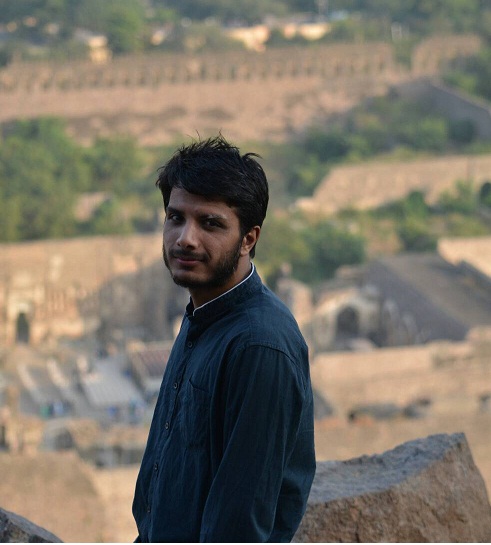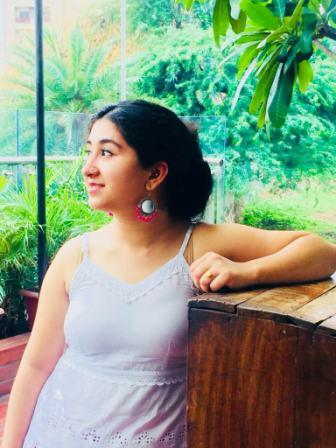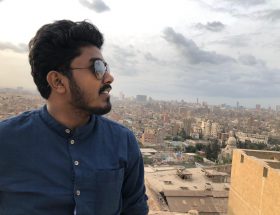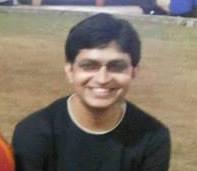Mudasir Ali Lone
 We usually shrug our shoulders when it comes to casteism in Kashmir. If you’re in a mood for horrible stories, go to the homes of Greest (peasants) and hear about the horror stories of how Malluh/Peer (upper-castes) used to treat them. If you think that’s not horrible enough then go to Naangaar (landless) and ask them how they were and still are treated by other communities. If you’re looking for more disgust then go to the Waatal community (Chamaar, also called Sheikh in Kashmir) and ask them about how they have always been ostracized from society. They have been ostracized to such an extent that the word Waatul/Sheikh has become a taunt and is used by people as as insult to refer to people from other communities. There are also the Haaenz (fisher community) who have to face the ire of casteism. I don’t know anyone from the community personally, but since childhood I have heard the word Haaenz being used as a taunt/insult, and have seen almost everyone in my village and others disparaging/disrespecting them. After you’ve done all that, come back to me and shrug off your shoulders again at the mention of casteism in Kashmir. I dare you!
We usually shrug our shoulders when it comes to casteism in Kashmir. If you’re in a mood for horrible stories, go to the homes of Greest (peasants) and hear about the horror stories of how Malluh/Peer (upper-castes) used to treat them. If you think that’s not horrible enough then go to Naangaar (landless) and ask them how they were and still are treated by other communities. If you’re looking for more disgust then go to the Waatal community (Chamaar, also called Sheikh in Kashmir) and ask them about how they have always been ostracized from society. They have been ostracized to such an extent that the word Waatul/Sheikh has become a taunt and is used by people as as insult to refer to people from other communities. There are also the Haaenz (fisher community) who have to face the ire of casteism. I don’t know anyone from the community personally, but since childhood I have heard the word Haaenz being used as a taunt/insult, and have seen almost everyone in my village and others disparaging/disrespecting them. After you’ve done all that, come back to me and shrug off your shoulders again at the mention of casteism in Kashmir. I dare you!
Malluh/Peer stand at the top of caste-pyramid, then there are Greest, then come the Naangaar, then at bottom are the communities like Sheikh, Haaenz. Malluh have exploited everyone and maintained their position at the top through treachery, deception and lies. There is a common saying about them: “Malluh deeshith goss parun istigfaar“, which means, “if you see a Malluh, seek forgiveness from God”.
I was talking to a friend about Casteism in Kashmir recently and he said that, “Sheikh and Haaenz always lived in ‘ghettos’ and were ill-treated”. He then narrated an incident from his village where, “A person from Sheikh community was asked to dine with the head priest of the village (Malluh). He, unaware of Malluh’s presence in the gathering, ran away from the gathering, saying he will burn in hell if he shares the plate with the Imam (Malluh)”. Malluh have a notorious reputation for using religion for their personal benefits and for exploiting others. They have always used religion as a tool to maintain their position at the top of hierarchy. My friend further said that “He (Sheikh) was a lean old man, his family along with 3 or 4 other cobbler families lived on the fringes of our village. A notorious Galli (street) that was christened as Prem Galli by an Indian Army officer who would frequent the street to see girls and taunt them. The Galli continues to be known so.”
I also remember an incident when I was traveling in a train with two other acquaintances. One of them was a Kumar (from potter community, called Kraal in Kashmiri). They had a little fight over something and they started arguing with each other when suddenly the other guy told him, “Kraal chhukh naa, haawakh naa Karaaluh khasltat (You are a Kraal, and you’re showing your Kraal qualities).” I wasn’t surprised because casteist jibes are a norm in Kashmir and there is no stopping it.
In my own village there is a sort of ‘ghettoization’ of Sheikh community. All the Sheikhs from our village reside within a very small area with a huge density of homes compared to the other areas of village. They have small homes with almost no or very little space. I remember seeing new members of that community coming to our village and they would go nowhere else but find a place in that particular area to build their homes even when the place seemed almost filled up with homes. That area is called Sheikhpoor (Sheikh Mohalla), it’s sandwiched between a school and a road. It’s completely in contrast with the way other communities live in Kashmir with open spaces around their homes. It also gives us a clear picture of how Sheikhs or Haaenz are accepted by other communities. Coming to the Naangaar community, they get a little respite from casteism (compared to Sheikhs) because other communities are dependent upon them for their daily needs. Naangaar community includes skilled workers like carpenters, masons, barbers, bakers (kaandir), potters, blacksmiths etc. As I am from Greest family, so I know very well how my community look down upon Naangaar, disrespect them and try to keep them under their foot.
A marriage between Malluh/Peer and others is almost impossible, there are numerous cases in Kashmir where Malluh/Peer citing their upper caste status refused to let their children marry in the lower castes. Greest and Naangaar getting married raises eyebrows and faces huge opposition. Sheikh/Haaenz community is totally ostracized and I’m yet to know about marriage ties with them from other communities. One of my friends (who’s from a Greest family) told me that she wants to marry a boy from Naangaar family. She asked me whether her parents will allow her. I said, “kyaazih nuh? (Why not?)” even when deep down I know that she’ll face stern opposition from her family. She told me that a relative of the boy, who’s also her family friend, told her to forget about the marriage as it will lead to tension between their families. I must tell you that this family friend is also a Naangaar and it was through his family that she met the boy. And now, when she will tell her family about the boy, all hell will be let loose first on their family and friends, and then on they boy’s family. For how dare a Naangaar boy try to ‘steal’ a Greest girl!
There are many such cases where it led to bitter fights and broke strong friendships apart. Greest family can be best friends with a Naangaar family. It’s acceptable to have friendship but marriage ties between them leads to strong opposition and has the potential to wreak havoc. I know about a marriage between a woman from Naangaar family to a man from Greest family, it was an arranged marriage. When they got married, I used to hear a lot of people from Greest community saying “Yimav kyaazih korr Naangaaran hind? (Why did they marry him in a Naangaar family?)” That woman has been taunted many times for being a Naangaar in a Greest family. But thanks to the religious views of that man’s family, the discrimination hasn’t been bad but the taunts still continue. After all it’s our bloody culture!
Let’s now talk about the intelligentsia from Kashmir who talk about caste outside Kashmir but miserably fail to see the same in Kashmir. I personally haven’t yet seen a proper debate on casteism in Kashmir by anyone, anywhere, bet it mainstream media or even social media. I know Kashmiri guys who acknowledge the existence of casteism and caste structures in various communities (outside Kashmir), but shockingly use casteist slurs freely in Kashmir. I was shocked to see these guys use terms like Haaenz/Waatul as an insult to others and when they are confronted about it, they are simply caught unawares about the casteist connotations of these terms. Mind you that these are the guys who claim to understand caste and claim to be sort of anti-caste warriors, and if that’s how they (supposedly enlightened and expert people) fail to see casteism in Kashmir you can only wonder about others, the common people. Talk to anyone in Kashmir about casteism, they simply shift the debate to India. They will talk about Dalits and Bahujans in India, but never ever have I heard anyone acknowledge it’s evil presence in Kashmir right under their noses. We love to live in denial!
The caste issue in Kashmir needs to be addressed, discussed and debated as it is: an evil monster that lives in our hearts. I don’t see a reason for feeling proud about Kashmiri heritage and culture when it has produced evils like Casteism. I don’t give a damn about other things Kashmiri culture and tradition has produced, if it has produced an evil like casteism it’s more than enough reason for me to despise it. Ours is a casteist society and I’m ashamed of it, I think we all should be. Further, I don’t understand the notions of ‘collective pride’, except when it’s a statement against oppression/oppressor.
P.S. As this is just based on my personal experience, there may be certain inaccuracies or I may have missed certain points of sensitivity regarding people from various communities or misrepresented them. If there is any such error or misrepresentation, please point it out. And a note to Malluh/Peer community: if you want to speak on this topic start with the acknowledgement of your casteist exploitation of other communities from centuries and how much you are ashamed of it. If not that, then please don’t try to say anything at all.
We’re also a highly racist society, I will leave that topic for you to reflect upon now and maybe we will talk about it another day.
Please read the next part of this article here.
~
This essay was first published on the author’s blog here.
A version of this was also published by Kashmir Reader here.
~~~
Mudasir Ali Lone is pursuing B.Tech at Maulana Azad National Urdu University, Hyderabad and can be reached at: aleemudasir@gmail.com










